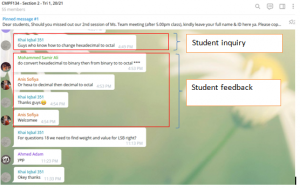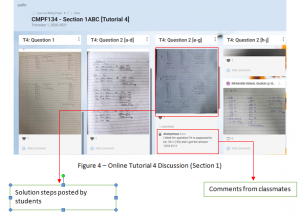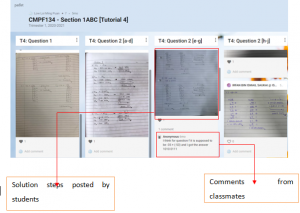Course overview
The course builds fundamental knowledge on data representation in computing environments and on how digital information can be obtained from data. In addition, the course addresses the mechanisms involved in the process of transmitting information from source to drain. The topics covered include number conversion systems, integer representation formats, Boolean logic, data units, data types, computing of encoding systems, and fundamentals of information theory. Upon completion of the course students are able to recognize different data representation formats in the digital world. They are also able to apply appropriate techniques in manipulating arithmetic and logical operations in computing environments. They are further able to apply appropriate information theory concepts in digital data communication systems.
Participants in piloting
This is a core, compulsory course for students enrolled in the Bachelor in Computer Science (Software Engineering) (Hons.) at Universiti Tenaga Nasional. The course is part of the 1st year curriculum. On average, a total of 50 – 100 students attend this course every semester. It bears 2 credit points that correspond to a 2 hour lecture each week. 133 students attended the course in the 2020 – 2021 academic year. They were divided into 2 sections, namely:
- Section 1 that was comprised by 78 students.
- Section 2 that was comprised of 55 students.
It bears 4 credit points that correspond to a 3-hour lecture and a 2-hour tutorial per week.
Use of ALIEN services and tools
Students worked virtually using the Telegram® platform. This platform acts as an on-line public discussion board, in which the lecturer shares with students, class notices and reminders. The platform was popular with students as it supports notifications and communication on smart phones. Two different Telegram® groups were created, one for each section. Students were encouraged to participate in discussions, to inquire, and to provide feedback to their peers.


This active learning approach increased the sense of affiliation of students. Students participated spontaneously by making inquiries, cared for their peers by providing feedback, and appreciated information they received by giving thanks. The lecturer was the facilitator, guiding students when feedback was inaccurate.
Another active learning technique applied in this subject was peer reviewing or peer teaching. In this scenario, students acted as both educator and learner at the same time. Firstly, the subject lecturer divided the students into groups of up to 5 individuals. The lecturer posted tutorial questions for each specific topic onto the Padlet® platform. Each group was required to answer at least one question. At the same time, students reviewed the answers of group members and corrected their peers by leaving comments when they identified mistakes in their classmates’ working steps. When the session was completed, the lecturer reviewed and commented on all student submissions. To ensure that all students participated actively in this peer teaching session, the activity had a weight of 10% on the final grade. Students agreed that the activity boosted their interaction skills and increased their self-motivation on finding the correct solution to a given problem.




